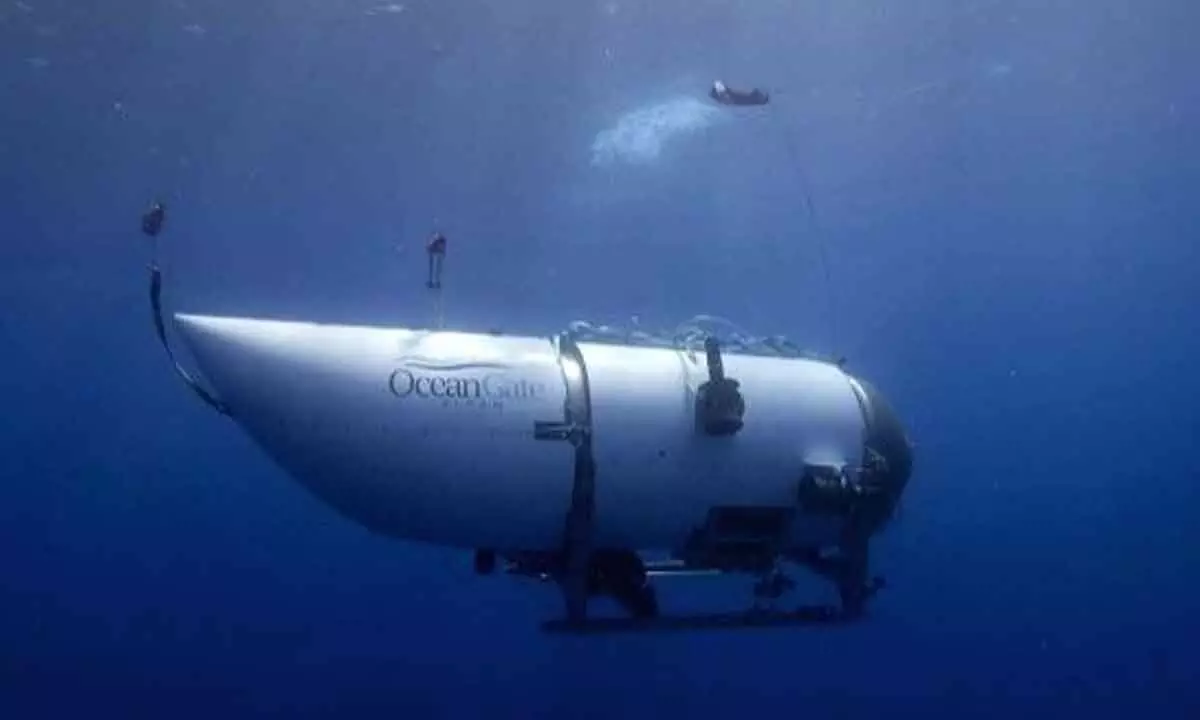Search for missing tourist sub enters critical stage

The search for the missing tourist submarine with five people on board, is entering a critical stage as the dwindling supply of oxygen in the vessel is estimated to run out on Thursday.
The search for the missing tourist submarine with five people on board, is entering a critical stage as the dwindling supply of oxygen in the vessel is estimated to run out on Thursday.
According to estimated from the US Coast Guard, the supply of oxygen could run out by 7.18 a.m. on Thursday EST (4.48 p.m. IST), reports the BBC.
The Titan submersible, operated by OceanGate Expeditions, begins each trip with 96 hours of life support.
The search area as of Thursday morning covers an area twice the size of the US state of Connecticut, and a sub-surface area 4 km deep.
The expansion of the site was because of underwater sounds detected on Tuesday and Wednesday by a Canadian P-3 aircraft. But the source of the sounds remains unknown.
But according to Capt. Jamie Frederick, the response coordinator for the First Coast Guard District, the searches in the area have "yielded negative results".
"Data from the plane that identified the noises was sent to the US Navy, but has so far been inconclusive," CNN quoted Frederick as saying, adding that the Coast Guard does not know what the sounds were.
Meanwhile, 10 extra ships and several remote submarines will join the search on Thursday, more than doubling operations, the BBC reported.
Camera-equipped remote-controlled vehicles (ROVs) will also be scanning the depths of the seafloor throughout the day.
The submersible began its two-hour descent to the wreck of the Titanic on the morning of June 18.
The Titanic lies within a region called the "midnight zone" -- known for its freezing temperatures and perpetual darkness.
It lost contact with the Polar Prince, the support ship that transported the craft to the location in the North Atlantic, an hour and 45 minutes into its descent, officials said.
Factors like what happened to the submersible, why it lost contact, and how close it was to the Titanic when it went missing remain unanswered.
The five people on board Hamish Harding, 58-year-old British adventurer who has previously been to space and multiple times to the South Pole; British businessman Shahzada Dawood (48) and his son Suleman (19); Paul-Henry Nargeolet (77), a former French Navy diver who has reportedly spent more time at the Titanic wreck than any other explorer and was part of the first expedition to visit it in 1987; and Stockton Rush (61), the chief executive of OceanGate.
Officials believe that they have "limited rations" of food and water.
Ret. Navy Capt. David Marquet, a former submarine captain, told CNN that the near-freezing water at that depth is probably making the situation very uncomfortable.
"There's frost on the inside of the parts of the submarine. They're all huddled together trying to conserve their body heat. They're running low on oxygen and they're exhaling carbon dioxide," he said.
Woman injured in stabbing attack in Tokyo, suspect at large
Bengal cop booked for murder over mysterious death of woman home guard, SIT to probe case
Staffer recalls horror of 7-kg gold robbery by armed gang in Karnataka’s Hunsur
25-Year-Old Airline Cabin Crew Member Dies At Gurugram Party; Police Begin Investigation














